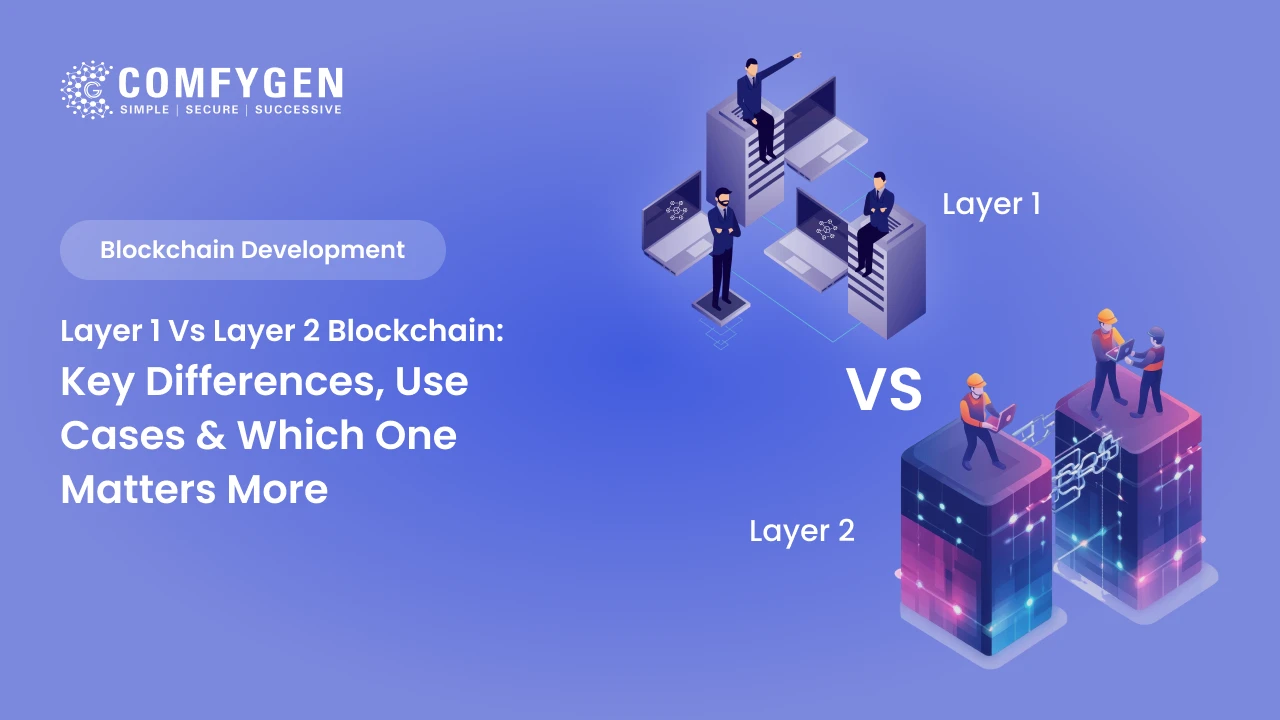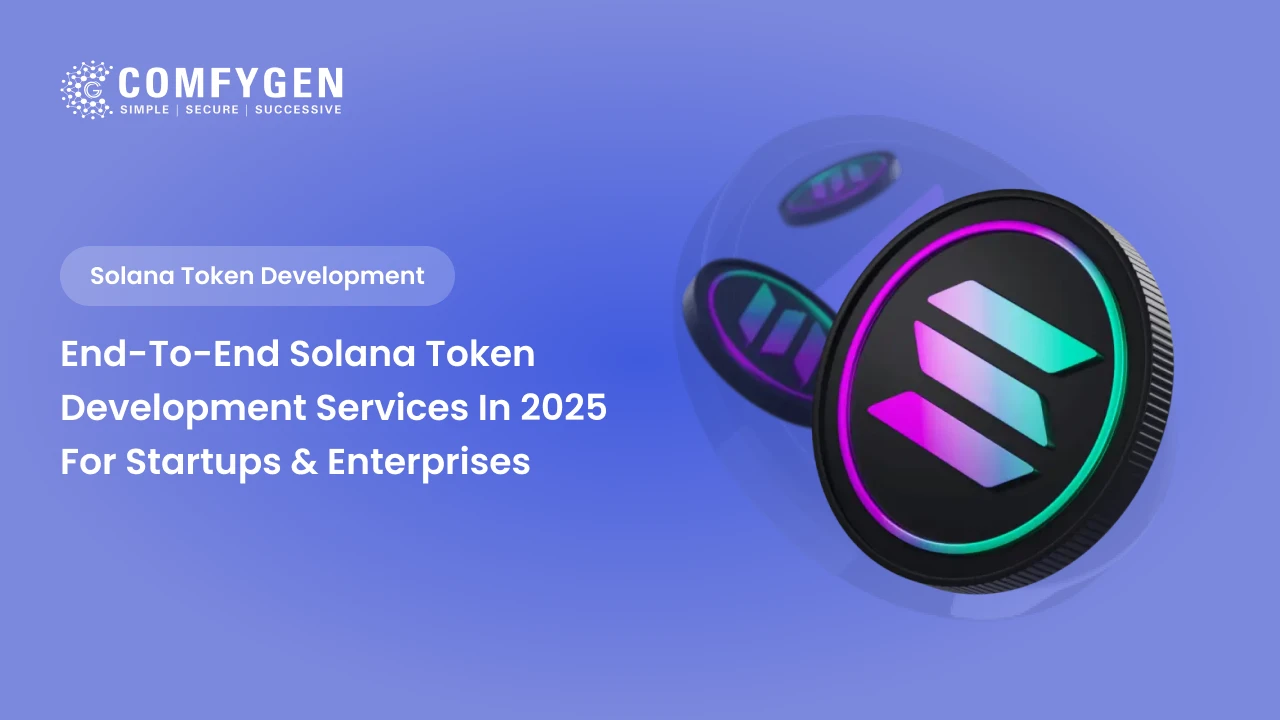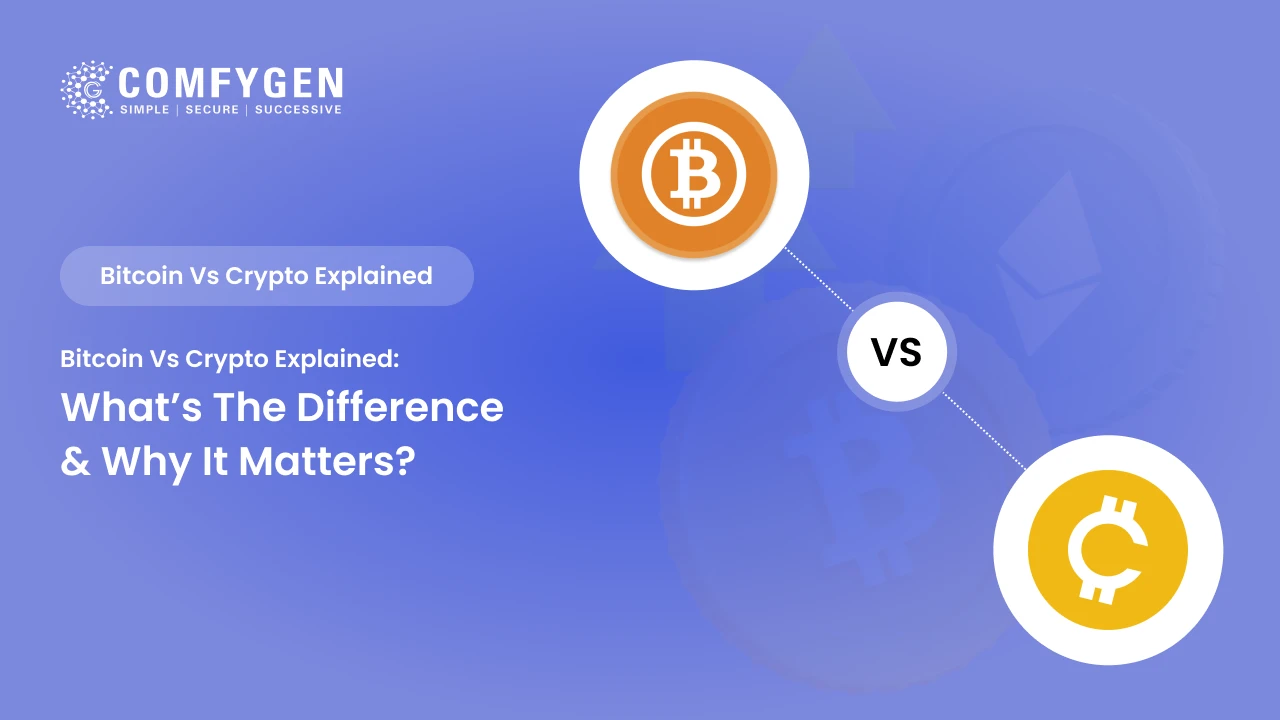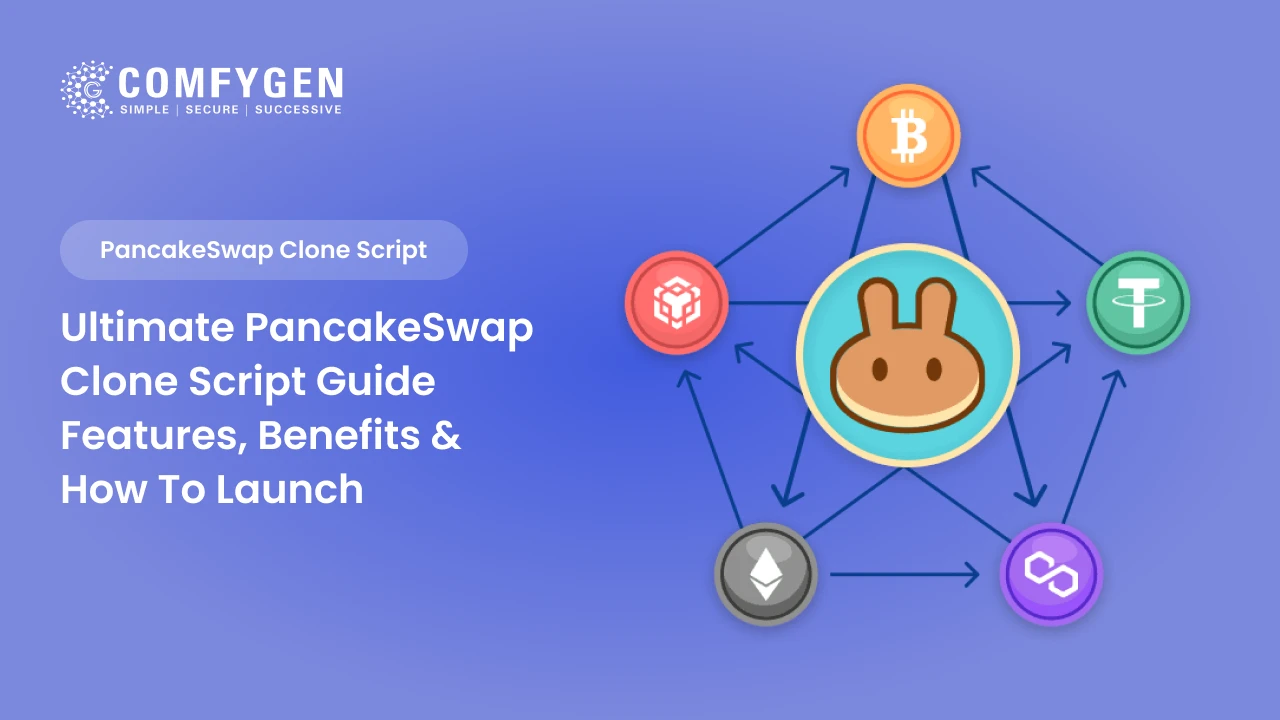Cryptocurrency Exchange Development: How to Create a Platform Like Binance or Coinbase
The rise of cryptocurrency has revolutionized the financial world, creating new avenues for investment, trading, and technology-driven finance. Among the major players in this space are cryptocurrency exchange platforms like Binance and Coinbase, which enable users to trade cryptocurrencies efficiently, securely, and at scale.
The growing demand for digital assets has made it a lucrative opportunity for entrepreneurs and businesses to invest in cryptocurrency exchange development. But what does it take to create a robust, secure, and scalable crypto exchange platform?
In this in-depth guide, we will explore everything you need to know to build a crypto exchange like Binance or Coinbase, including types, features, architecture, technology stack, compliance, development steps, cost, and more.
What is a Cryptocurrency Exchange?
A crypto exchange is an online platform that allows users to buy, sell, and trade cryptocurrencies like Bitcoin, Ethereum, and other altcoins. These exchanges act as intermediaries, matching buyers with sellers and facilitating the transfer of digital assets.
Depending on the type, some exchanges support fiat-to-crypto transactions, while others offer crypto to crypto trading.
Ready to Launch Your
Own Crypto Exchange?
Contact Now
Types of Cryptocurrency Exchanges
There are several types of cryptocurrency exchanges, and each serves different user preferences:
Centralized Exchanges (CEX)
These are controlled by a central authority. Users must trust the exchange to hold their assets securely.
- Examples: Binance, Coinbase, Kraken
- Pros: High liquidity, fast transactions, user-friendly
- Cons: Vulnerable to hacks, requires KYC
Decentralized Exchanges (DEX)
These operate without a central authority, using smart contracts for peer-to-peer trades.
- Examples: Uniswap, PancakeSwap
- Pros: Anonymity, user control of funds
- Cons: Limited liquidity, slower execution
Hybrid Exchanges
A combination of CEX and DEX offering the speed of centralized systems with the security of decentralized ones.
P2P Exchanges
Enable direct user-to-user trading without intermediaries.
- Example: LocalBitcoins
- Use Cases: Emerging markets, underbanked populations
Why Build a Crypto Exchange Like Binance or Coinbase?
Developing your crypto exchange platform offers numerous advantages:
- Massive Revenue Potential: Earn through trading fees, withdrawal fees, listing fees, staking, and margin trading.
- Explosive Growth: Crypto user base surpassed 400 million globally in 2024.
- First Mover Advantage: Tapping into niche regions or specific use cases can bring massive success.
- Brand Authority: Establish your brand as a trusted player in the digital finance ecosystem.
Key Features of a Cryptocurrency Exchange Platform
For Users:
- User Authentication (KYC/AML)
- Multi-Currency Wallets
- Real-Time Trading Engine
- Live Charts and Market Analysis Tools
- Crypto & Fiat Deposit/Withdrawal Options
- Push Notifications & Alerts
- Mobile App Support (iOS & Android)
For Admins:
- Admin Dashboard
- User Management
- Transaction Monitoring
- Commission & Fee Configuration
- Dispute Management
- Compliance Tools
Advanced Features:
- Margin Trading
- Staking & Yield Farming
- AI-based Price Prediction Tools
- Liquidity API Integration
Technology Stack for Cryptocurrency Exchange Development
| Component | Technology Stack Options |
|---|---|
| Frontend | React.js, Vue.js, Angular |
| Backend | Node.js, Python, Ruby on Rails |
| Database | PostgreSQL, MongoDB, MySQL |
| Blockchain Protocols | Ethereum, Binance Smart Chain, Solana |
| Wallet Integration | Web3.js, MetaMask API, WalletConnect |
| Trading Engine | C++, Java, Go |
| Security | SSL, AES-256, JWT, 2FA, Captcha |
| DevOps | Docker, Kubernetes, AWS, Jenkins |
How to Develop a Cryptocurrency Exchange: Step-by-Step Guide
Step 1: Research & Business Planning
- Define your niche (spot trading, futures, staking)
- Decide on your target audience and jurisdiction
- Conduct competitive analysis
Step 2: Legal Compliance
- Consult legal advisors
- Register your company
- Obtain necessary licenses (FinCEN, FCA, etc.)
- Ensure compliance with AML/KYC regulations
Step 3: UI/UX Design
- Create intuitive interfaces
- Focus on both beginner and expert traders
- Build responsive designs for desktop & mobile
Step 4: Core Development
- Develop backend (user auth, trading engine, wallet)
- Integrate real-time order books and charting tools
- Implement fiat/crypto payment gateways
- Enable liquidity providers and APIs
Step 5: Security Integration
- Use AES-256 for data encryption
- Apply multi-factor authentication
- Add cold wallet support
- Integrate DDoS protection and WAF
Step 6: Testing & QA
- Perform unit, integration, load, and security testing
- Run bug bounty or ethical hacking sessions
Step 7: Deployment & Launch
- Deploy on cloud infrastructure (AWS, Azure)
- Monitor uptime and latency
- Soft launch in controlled environments
Step 8: Post-Launch Support
- Ongoing maintenance & upgrades
- Customer support and moderation
- Add new coins and features based on feedback
Security Measures for a Secure Exchange
- Cold & Hot Wallet Segregation
- Encrypted Data Transmission (SSL/TLS)
- Anti-Phishing Features
- Multi-Sig Wallet Authentication
- Withdrawal Whitelists
- KYC & AML for Fraud Prevention
- Continuous Penetration Testing
Legal and Regulatory Compliance
Ensuring legal compliance is non-negotiable. Here’s what to consider:
- Register Your Business: Choose a crypto-friendly jurisdiction (Estonia, Switzerland, UAE, etc.)
- Licensing: Check if you need Money Services Business (MSB) registration or similar.
- KYC/AML Compliance: Integrate ID verification services (e.g., Jumio, Onfido)
- Data Privacy: Comply with GDPR, CCPA regulations
- Audit Trails: Maintain detailed records for authorities
Cost to Develop a Cryptocurrency Exchange Platform
The cost of development depends on various factors, including:
- Platform type (CEX, DEX, Hybrid)
- Features and customization
- Number of supported currencies
- Technology and hosting infrastructure
- Region of your development team
Approximate Cost Breakdown:
| Component | Estimated Cost |
|---|---|
| UI/UX Design | $5,000 – $10,000 |
| Frontend & Backend Development | $20,000 – $40,000 |
| Trading Engine | $10,000 – $25,000 |
| Wallet Integration | $5,000 – $15,000 |
| Security Implementation | $10,000+ |
| Testing & QA | $5,000 – $10,000 |
| Legal & Licensing | Varies by region |
| Total | $50,000 – $150,000+ |
Note: White-label exchange software can reduce cost and time significantly.
Struggling to Build Binance
like Platform?
Contact Now
Conclusion
Creating a cryptocurrency exchange like Binance or Coinbase is an ambitious project. Still, with the right planning, technology stack, and expert development team, it can become a powerful venture with high revenue potential.
As crypto adoption increases globally, now is the perfect time to enter this evolving industry. Whether you want to launch a centralized exchange, a DEX, or a hybrid platform, success lies in secure architecture, seamless UX, robust compliance, and continuous innovation.
Need Help Building Your Crypto Exchange?
At Comfygen, we specialize in cryptocurrency exchange development, custom blockchain development solutions, and DeFi platforms. From concept to deployment, we guide you every step of the way with scalable architecture and ironclad security.
Frequently Asked Questions (FAQs)
How do I create a cryptocurrency exchange like Binance or Coinbase?
To create a crypto exchange like Binance or Coinbase, follow these steps:
-
Define your exchange type (CEX, DEX, or hybrid).
-
Choose a development partner or hire a blockchain development team.
-
Decide on your tech stack and architecture.
-
Integrate a robust trading engine and crypto wallet.
-
Ensure security features like 2FA, encryption, and cold storage.
-
Get required licenses and comply with regulations.
-
Test thoroughly and launch with strong marketing support.
What are the steps to build a crypto trading platform from scratch?
Building a crypto trading platform involves:
-
Market Research & Planning
-
UI/UX Design
-
Backend Development (Trading Engine, APIs)
-
Wallet Integration (Hot & Cold)
-
KYC/AML & Compliance Setup
-
Liquidity Management
-
Security Layer Integration
-
Testing, Deployment, and Ongoing Maintenance
A reliable crypto exchange development company can simplify the process.
How much does it cost to develop a cryptocurrency exchange in 2025?
The cost to develop a crypto exchange platform in 2025 varies based on complexity:
-
Basic exchange (MVP): $30,000 – $50,000
-
Mid-level with features like KYC, API, admin panel: $60,000 – $100,000
-
Advanced Binance-like exchange: $120,000 – $250,000+
White-label solutions cost less and have faster time-to-market.
What technology is used to build a crypto exchange platform?
A modern crypto exchange tech stack includes:
-
Frontend: React.js, Angular, or Vue.js
-
Backend: Node.js, Python, Ruby on Rails
-
Database: PostgreSQL, MongoDB
-
Blockchain Layer: Ethereum, Binance Smart Chain, Solana
-
Wallet Integration: Web3.js, ethers.js
-
Security: SSL, 2FA, encryption, DDoS protection
The technology choice depends on scalability, performance, and security requirements.
Is it legal to start a cryptocurrency exchange platform?
Yes, but the legality depends on your jurisdiction. In most regions, you must:
-
Register your business
-
Acquire a crypto-related license (like MSB in the US)
-
Implement KYC/AML protocols
-
Ensure data protection compliance (GDPR in Europe)
Always consult a legal expert when starting your crypto exchange.
Which is better to build — centralized or decentralized crypto exchange?
It depends on your goals:
-
Centralized Exchanges (CEX) offer speed, liquidity, and ease of use.
-
Decentralized Exchanges (DEX) offer privacy, user control, and no intermediaries.
Hybrid exchanges combine the best of both. Binance is a CEX, while Uniswap is a DEX.
Can I launch a white-label crypto exchange in 2025?
Yes! White-label crypto exchanges are ready-made solutions you can customize and launch quickly. They include:
-
Trading engine
-
Wallet support
-
Admin panel
-
KYC/AML modules
-
UI/UX customization
White-label development reduces costs and time significantly.
What features should I include in a crypto trading platform?
Must-have features include:
-
User Registration & Verification (KYC)
-
Cryptocurrency Wallet (multi-currency support)
-
Trading Engine
-
Order Book & Matching Engine
-
Admin Dashboard
-
Analytics & Reporting
-
Customer Support
-
Security (2FA, encryption, withdrawal limits)
-
Liquidity Aggregation
How do crypto exchanges make money?
Crypto exchanges earn revenue through:
-
Trading Fees (maker/taker fees)
-
Withdrawal Fees
-
Listing Fees from new tokens/coins
-
Margin Trading & Lending
-
Premium Features & Subscriptions
-
Referral & Affiliate Programs
A well-marketed platform with good liquidity can be highly profitable.
How can I ensure liquidity in a new crypto exchange?
Ways to ensure liquidity:
-
Integrate a liquidity provider API
-
Use shared order books from major exchanges
-
Offer incentives to market makers
-
Partner with institutional investors
-
Launch with high-volume trading pairs
Liquidity is key to user retention and trading volume growth.

Mr. Saddam Husen, (CTO)
Mr. Saddam Husen, CTO at Comfygen, is a renowned Blockchain expert and IT consultant with extensive experience in blockchain development, crypto wallets, DeFi, ICOs, and smart contracts. Passionate about digital transformation, he helps businesses harness blockchain technology’s potential, driving innovation and enhancing IT infrastructure for global success.
Based on Interest

How to Build a Crypto Trading Bot in 2025: Complete Development Guide for Beginners & Experts
Introduction The world of cryptocurrency never sleeps. With 24/7 markets and volatile price movements, the need for automated trading solutions has never…

Cryptocurrency Exchange Development: How to Create a Platform Like Binance or Coinbase
The rise of cryptocurrency has revolutionized the financial world, creating new avenues for investment, trading, and technology-driven finance. Among the major…

Layer 1 vs Layer 2 Blockchain: Key Differences, Use Cases & Which One Matters More in 2025
Introduction Blockchain technology, once the exclusive domain of cryptocurrencies, has now evolved into a robust tool for various industries, including finance, healthcare,…






